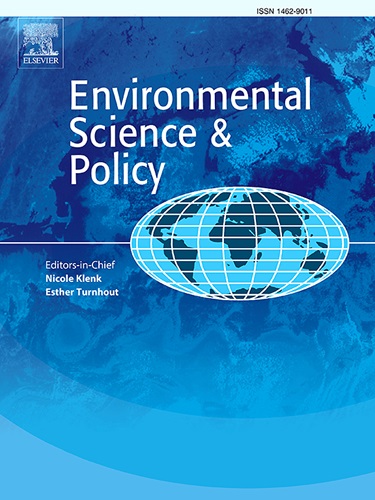Trends and purposes of European river monitoring and restoration
IF 4.9
2区 环境科学与生态学
Q1 ENVIRONMENTAL SCIENCES
引用次数: 0
Abstract
This study provides the first geospatial analysis of the trends and uptake of European river monitoring and restoration. European monitoring targets rivers draining agricultural and urban land, which leads to geospatial biases due to the co-occurrence with soils, topography, and river orders. Most notably, intermittent rivers and ephemeral streams are underrepresented due to lower monitoring intensities in Southern Europe, headwaters, and catchments with steeper slopes or less arable soils. Improving monitoring efforts in these ecosystems can advance our scientific understanding of complex linkages between ecological quality outcomes and specific stressors. Large differences were found in the spatial coverage of river monitoring and chemical status reporting between European river regions, which highlights comparability issues with the outcomes of Water Framework Directive river quality status due to the ’one-out-all-out’ principle. Chemical status monitoring is also less frequent in agricultural catchments, which leads to a knowledge gap on the impacts of priority substances, such as pesticides, on agricultural rivers. These uncertainties around the actual quality of rivers are propagated to the prioritisation, design and purposes of river restoration. River restoration coverage is distinctively higher in Western Europe and larger urban rivers, compared to lower incidences in headwaters draining agricultural or (semi-)natural catchments. Across most regions and geospatial factors, biodiversity conservation was the major purpose for river restoration. Agricultural headwaters and intermittent rivers are low-hanging fruits for future river restoration, wherein socio-economic drivers of river restoration can be leveraged to achieve parallel goals of biodiversity and water resource management.
欧洲河流监测和恢复的趋势和目的
这项研究首次对欧洲河流监测和恢复的趋势和吸收进行了地理空间分析。欧洲监测的目标是流经农业和城市土地的河流,由于土壤、地形和河流顺序的共同存在,导致地理空间偏差。最值得注意的是,由于南欧监测强度较低、源头和集水区坡度较陡或可耕地较少,间歇性河流和短暂溪流的代表性不足。加强对这些生态系统的监测工作可以促进我们对生态质量结果与特定压力源之间复杂联系的科学理解。在欧洲河流区域之间,河流监测和化学状况报告的空间覆盖范围存在很大差异,这突出了由于“一出全出”原则与《水框架指令》河流质量状况结果的可比性问题。农业流域的化学状况监测也不太频繁,这导致人们对农药等重点物质对农业河流的影响缺乏了解。这些围绕河流实际质量的不确定性,会影响河流修复的优先顺序、设计和目的。在西欧和较大的城市河流中,河流恢复覆盖率明显更高,而在源头排水的农业或(半)自然集水区,河流恢复覆盖率较低。在大多数区域和地理空间因子中,生物多样性保护是河流恢复的主要目的。农业源头和间歇性河流是未来河流恢复的唾手可得的成果,其中可以利用河流恢复的社会经济驱动因素来实现生物多样性和水资源管理的并行目标。
本文章由计算机程序翻译,如有差异,请以英文原文为准。
求助全文
约1分钟内获得全文
求助全文
来源期刊

Environmental Science & Policy
环境科学-环境科学
CiteScore
10.90
自引率
8.30%
发文量
332
审稿时长
68 days
期刊介绍:
Environmental Science & Policy promotes communication among government, business and industry, academia, and non-governmental organisations who are instrumental in the solution of environmental problems. It also seeks to advance interdisciplinary research of policy relevance on environmental issues such as climate change, biodiversity, environmental pollution and wastes, renewable and non-renewable natural resources, sustainability, and the interactions among these issues. The journal emphasises the linkages between these environmental issues and social and economic issues such as production, transport, consumption, growth, demographic changes, well-being, and health. However, the subject coverage will not be restricted to these issues and the introduction of new dimensions will be encouraged.
 求助内容:
求助内容: 应助结果提醒方式:
应助结果提醒方式:


